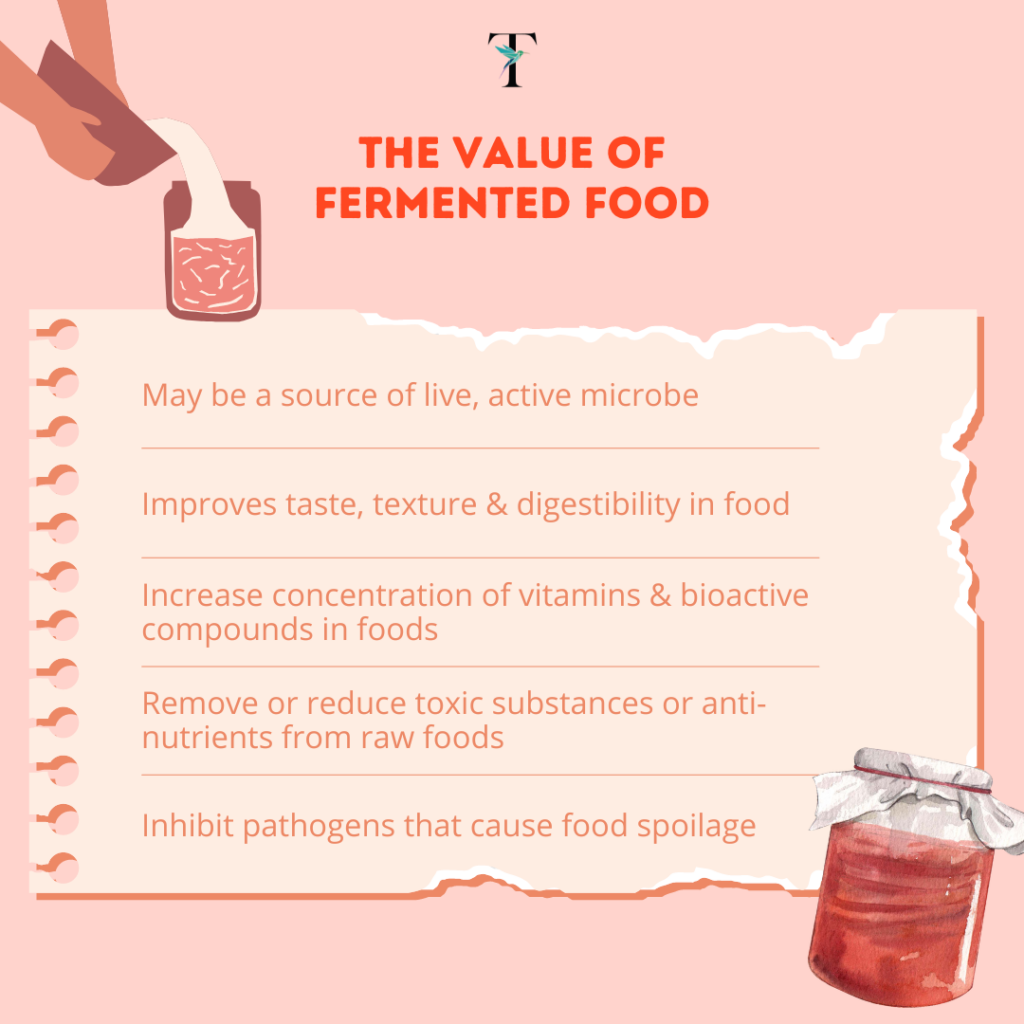
Enter your health store and before you know it: your basket is full of a ton of so-called probiotic-containing products. Here’s 5 things to know about probiotics before ringing them up at the till:
![]() What is a probiotic?
What is a probiotic?
Probiotics refer to live ‘bugs’ (microorganisms or microbes) that have beneficial effects on our bodies when ingested in adequate amounts. The Greeks truly captured the essence of these microbes when they named these bugs: pro = for and bioisis = life.
Probiotics have come a long way in recent years: from being known as that ‘good stuff in yoghurt’ to finding themselves in tons of supplements, food products and skincare ranges.
Nowadays, manufacturers put ‘probiotic’ somewhere on a label and the product flies off the shelf. But, are we sure that we’re benefiting from any and every product that we can get our hands on?
Unfortunately not. Not every product that contains live ‘bugs’ meets the scientific standard to be considered a ‘probiotic’. A ‘probiotic’-containing food or supplement needs to earn its name. Here’s how:
- Its health benefit/s must have been documented in scientific literature
- Its microbes must be alive at time of consumption
- Its microbes are present at levels (adequate amounts) to provide benefit
- Its microbes are taxonomically defined (genus, species, strain) to strain level
- The genome sequence of its microbes are available
- It’s been proven safe for intended use in humans

![]() What does a probiotic do?
What does a probiotic do?
Probiotics have wide-spread effects in the body – their mechanism of action is very complex! In essence, they can improve your health by:
- Helping your immune system to function properly
- Aiding in digestion by breaking down foods
- Keeping ‘harmful’ organisms in check
- Producing vitamins and aiding in nutrient absorption
![]() What is a good probiotic?
What is a good probiotic?
Your go-to fermented food may not be the answer. We add a forkful of kimchi to salads or sip on kombucha throughout the day, and we think we’re a-for-away.
Firstly, not all ‘bugs’ in fermented foods are alive by the time we consume them. But, even in the case of fermented foods that retain live organisms: scientists are not always able to consistently characterise the types and amounts of microorganisms in traditional fermented foods due to varying preparation techniques, and as a result, cannot test or document the microorganisms’ specific health benefits. So technically, fermented foods cannot be defined as a ‘probiotic’ according to science’s standard.
Don’t get me wrong: there is value in consuming fermented foods, but we just cannot guarantee that you’re getting in live or adequate microbes in every product on the shelf. Basically, it’s a bit of a ‘touch and go’ kind of approach.
Here’s how you may benefit from fermented foods:
- A product may be a source of live microbes and may possess adequate amounts thereof
- Live bugs in foods can improve the taste, texture AND digestibility of food
- Live bugs in foods can increase the concentrations of vitamins and bioactive compounds therein
- Live bugs in foods can remove or reduce toxic substances or anti-nutrients from raw foods
- Live bugs in foods can inhibit pathogens that cause food spoilage

Fun fact: some yoghurts actually meet the scientific criteria to be considered a ‘probiotic’ – we call them a ‘probiotic fermented food’. Sadly, we know that dairy isn’t for everyone. For more on dairy, read The Dairy Debate.

![]() So, what is the best probiotic?
So, what is the best probiotic?
The best probiotic is one that actually is a ‘probiotic’ according to science. Here are 3 non-negotiables when choosing your probiotic supplement:
- Go for a reputable source: select those that have a ‘third party verification’ for product quality, and one that discloses the company’s contact name and contact number.
- Be mindful of storage and expiration: levels of live probiotics should be provided through the ‘best by’ date (not time of manufacture). The number of live organics in a product is measured in CFUs (Colony Forming Units). Avoid products stating CFUs ‘at time of manufacture’ as this does not account for the drop in numbers of live bacteria during storage. Make sure that the product contains a use-by date, and that you actually use the product by the ‘use by’ date to ensure that you’re getting adequate live bacteria.
- Know your strains: probiotics must be classified by their genus, species and strain on the label. Products should display each strain’s designation.

![]() What probiotic should I take?
What probiotic should I take?
Your best bet is to ask your dietitian to guide you here. Here are 3 ways in which your dietitian can help you:
- Indicate which strain is most beneficial for you: not all probiotics are the same, and some particular strains or certain combinations of strains have been proven effective in specific conditions.
- Tell you how much probiotic you need: the amount actually matters. Be sure the product contains the level of probiotics that was used in the study to prove benefit in humans.
- Tell you whether it’s safe to take a probiotic: probiotics are safe for most people, but chat to your dietitian if you are seriously ill or have a compromised immune system, or before offering probiotics to an infant.
What is the best probiotic for women?
In the case of ‘women’s issues’ – namely recurrent bacterial vaginosis + vulvovaginal candidiasis) – the probiotics L. rhamnosus GR-1 and L. reuteri RC-14 at 1 to 2 billion CFUs / day is the go-to combo.
3 myth busters
![]() The more CFUs and strains in my probiotic, the better.
The more CFUs and strains in my probiotic, the better.
More is not always better. Just because a product contains many strains, does not mean it’s the most beneficial product for you. Some studies support single-strain probiotic products, while others show that a combination of a variety of strains work better in specific conditions or cases.
But, too little can also be unhelpful. Be sure the product contains at least the level of probiotics that was used in the study to provide benefit. Chat to your dietitian.
![]() The sugar in my yoghurt ‘negates’ the effect of the live bacteria
The sugar in my yoghurt ‘negates’ the effect of the live bacteria
Interestingly, most studies examining the health benefits of probiotics in yoghurts have been conducted on sweetened yoghurts. So, it’s feasible to say that sugar in dairy products does not negate the beneficial effect of probiotics therein. But, as always, too much sugar in your diet is never a good thing so choose products without added sugars.
![]() All fermented foods are probiotic foods
All fermented foods are probiotic foods
Although fermented foods can be healthy, not all products meet the bar to be considered a ‘probiotic’. Firstly, some fermented foods undergo processing techniques – such as baking, filtering or pasteurisation – that may kill off or reduce the amount of live ‘bugs’ in the product. Secondly, not all fermented foods may contain ‘well-studied’ strains that have been proven to exert beneficial effects in the body when consumed in adequate amounts.








